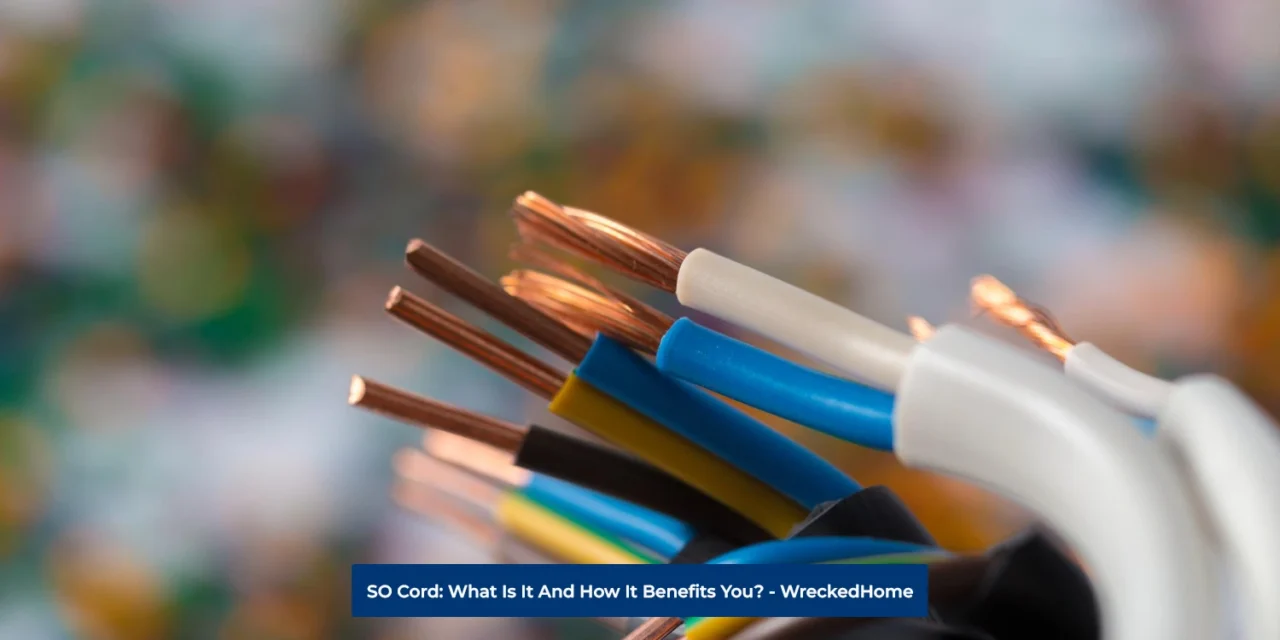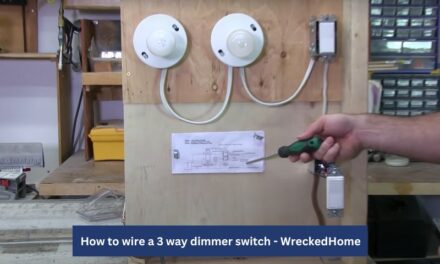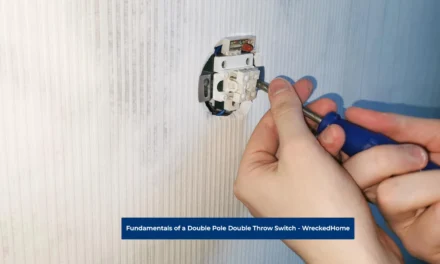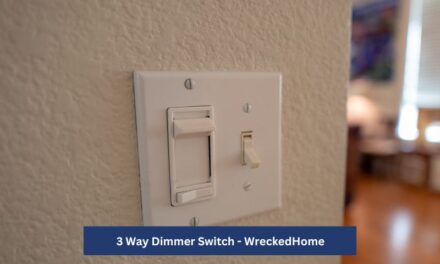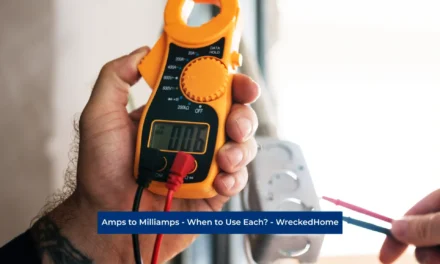Cords are an important parts of all industries. Every field needs power and for that power, sources and cables are essential. Choosing which cord is better for your task depends upon many factors. Because the market has many options, people often get confused. This is especially true for those who don’t have enough knowledge about it. The SO cord is one of the most utilized cords around. Stick around to read what this cord is and where they are used.
What Is A SO Cord?
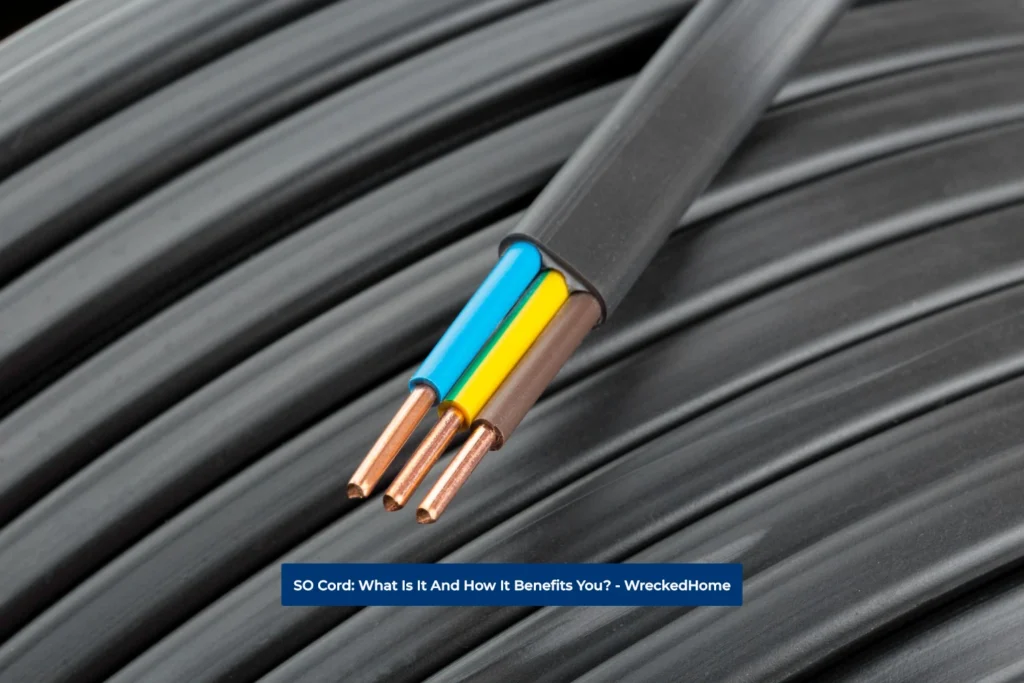
SO in this cord is a term referred to as a type of Service Cord, also known as SOW cable, which tells that the cord is for service applications. This electrical cable’s main purpose is to distribute power and offer connection between equipment in various industrial and commercial settings. The SOW cable is a flexible way of transmitting electrical power from one required point to another.
The cable is durable and constructed with multiple stranded copper conductors. A heavy-duty, oil-resistant outer jacket works as perfect insulation and protection to wire. The durable nature makes SOW cord perfect cable to use in environments where exposure to oil, water, chemicals, and extreme temperatures may occur. Its most applicable use is in temporary power connections in field of construction sites, workshops, factories, and outdoor events.
Identify the SO Cord
The identification of SOW cords is also easy, just like other cords in electrical applications. The name consists of one word and one number which indicates their uses and characteristics. In the case of the SOW cord, letter ‘S’ stands for “Service” and is best to use in various electrical service-related tasks.
The next is the number which represents the cord’s voltage rating, means the exact voltage cord handles up to a given number. Both these things help the user to find the right cord for their specific electrical needs.
For example, SOOW cord has voltage rating of 600V, thus safely handling electrical systems with voltage of up to 600 volts. While SJOOW 300 volts can tackle equipment that requires lower voltage.
Note: voltage rating is important and you have to be careful while choosing cord. If you choose insufficient rating cord for higher voltage it can be dangerous and using higher rating is just waste of energy. Thus it is not cost-effective, so you have to pick cord for a system or equipment that matches its voltage requirements.
Read our guide about How To 4 Way Switch Wiring.
Difference Between SO and SOOW
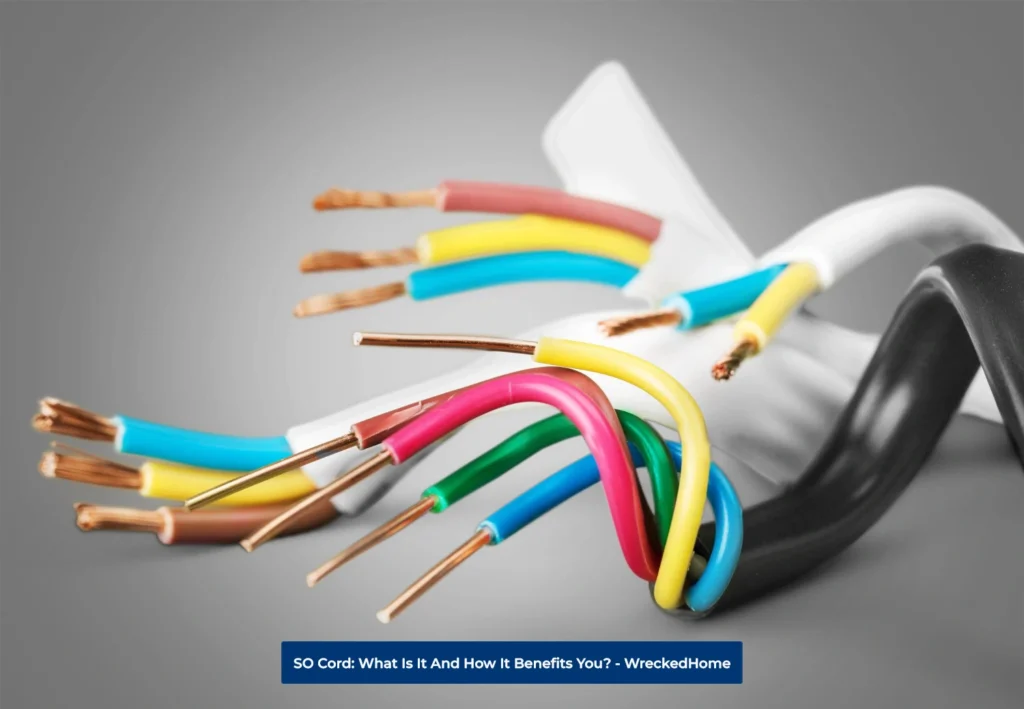
Many people get confused between SO/SOW and SOOW and consider them the same thing. But they are not. According to some, both SO and SOOW are different types while the majority believe that SOOW is type of SOW cord. The main difference is due to their construction and use, let’s see them in detail.
SOOW is a specific type of SOW cord, and acronym stands for:
- S: It’s for ‘Service’ which shows cable is used in service applications.
- OO: It’s for ‘Oil Resistant, Oil Resistant’ which means that this cable is resistant to oil. Thus its best application should be in areas which are exposed to oils and greases in common.
- W: It’s for Weather and Water Resistant which means this cord is also resistant to water, thus suitable for use in outdoor and wet conditions.
SO and SOOW have same construction like stranded copper conductors, insulation, and oil-resistant outer jacket. Both are heavy-duty electrical cords. SOOW is also weather-resistant that’s why it’s better to pick for more rugged outdoor environments.
When it comes to difference between SOW and SOOW cords, remember that the latter are just upgraded versions of SO cords. They are, in addition to being oil-resistant, offering added benefit of weather resistance.
Visit our store for 10% off our Save Home Energy products here.
Types
As portable power cable, the SOW cords’ most welcoming use is in electrical systems. Overall, they have flexible thermoset rubber jacket, a good one to offer resistance against oil, weather, and abrasion. But quality varies with each type like:
- The most common is SOOW cord, which has heavy-duty thermoset rubber jacket which makes it good to use in industrial, commercial, and construction field. Its main use is in temporary power distribution systems.
- SEOOW cords are very similar to SOOW cords but remember that they have thermoplastic elastomer jackets. They are more flexible and easier to work with in cold weather. Moreover, in addition to being water resistant, they are also resistant to ozone, thus giving extra protection.
- Another one is STOOW cord which is lighter than SOOW cord. Its outer jacket is thinner than latter one. This one is more flexible and easier to handle. Moreover, it’s less expensive than other available ones, but sadly, it’s not as durable as required.
- ST cord can tackle electrical currents of up to 600 volts, thus you can use it in wider electrical applications. Although it is relatively durable and versatile, this version is not as oil-resistant as needed. Just remember to not use it in areas where exposure to oil is maximum.
- SVT cord can efficiently tackle relatively high voltage levels. What makes SVT different from others is its suitability for wet locations because of its moisture-resistant properties. Thus, they are better to use in areas which are always exposed to water or damp conditions. The prominent areas include outdoor lighting, electrical appliances, or work as power tools in damp environments.
Note:
Moreover, remember that SOW cords are also available in various conductor sizes and configurations. When it comes to conductor 3 sizes, 10,12, 14 AWG are most common sizes. SOW cords are also available with two, three, or four conductors.
Construction
When it comes to SOW cord construction, you will find three main components mainly.
Conductors
SOW cords have copper conductors which are core of it and carry electrical current. However, they are also made of aluminum conductors but it isn’t as conductive and durable as copper.
Insulation
Insulation is crucial and for the SOW cord. Makers use Ethylene Propylene Diene Monomer (EPDM) rubber. This rubber is resistant to synthetic oil, ozone, and water. Moreover, it also protects cord from temperatures and environmental conditions.
Jacket
The cord has an outer layer which is known as a jacket. The SO cord has a thermoset chlorinated polyethylene (CPE) jacket which offers resistance to oil and harsh weather. It protects the inner part of the cord from moisture, sunlight, and other external things that affect its integrity.
Features and Benefits
Now you understand what these Cords are. Let’s discuss its features and benefits for further understanding
Features
- Flexibility: As highly flexible and easy to maneuver, these Cords are easy to wrap around tight corners and obstacles. Thus, it enhances its application in wide range of settings without difficulty.
- Durability: When it comes to durability, the SOW cord is built to last. These cords can withstand harsh environmental conditions, whether it’s exposure to sunlight, moisture, or chemicals. Thus they work for longer periods and don’t demand replacement.
- Safety: Safety standards are the most important thing considered in manufacturing SO cords. Its flame-retardant feature, makes them less likely to catch fire. Thus, most suitable for use in both residential and industrial settings.
- Wide Temperature Range: Whether it’s extreme cold or high heat, the SO cord works efficiently without losing its performance. Thus, you can use it for outdoor and indoor use.
- Oil Resistance: This cord is resistant to oil and other common industrial fluids. A perfect cable to use in factories and workshops.
- Easy Installation: These cords are easy to install. You can use connectors which come with them to connect them with various electrical devices and outlets.
Benefits
SO cords are very beneficial, let’s read about them to know more about them.
- They are reliable as they provide a consistent power supply. Thus, reducing risk of downtime in critical applications.
- They are also versatile because of their flexible and durable nature. Thus, they are useful in various fields and industries, in home and outdoor events, for various electrical needs.
- Another benefit that you get from SO cord use is long term functioning and less replacement needs. Thus saving users money in long run.
- They also ensure safety as their flame-retardant and oil-resistant feature. It lowers risk of accidents in both residential and commercial settings.
- Though the upfront cost is little bit higher, their durable nature makes them cost-effective product.
- Due to its user friendly nature, this cord is easy to install. It doesn’t demand experts for installation.
Applications of SO Cords
Sow cords have many versatile characteristics, that’s why they are usable in various sectors.
- Industrial Machinery: In order to power heavy machinery and equipment, manufacturing plants and factories need flexible and durable cords. SO cords are beneficial in this matter.
- Construction Equipment: In construction industry, bug machines like cranes, cement mixers, and electric tools need high quality cords to supply electricity. These cords are helpful there as they withstand rugged conditions of construction sites.
- Power Tools: Tools, such as drills, saws, and grinders, need power to run. Here SO cord offers necessary electrical connection as they are strong enough to tackle demands of these tools.
- Generators: To connect generators to appliances and electrical systems needs strong cords like SO cords.
- Lighting: Cords need to connect outdoor, temporary lighting setups, construction sites or decorative outdoor lighting. SO cords are best as they are flexible and weather resistant.
- Temporary Power: You know how much power is needed for temporary events like concerts, fairs, or outdoor markets. All these needs are fulfilled by strong power sources and SOW cords which are durable and adaptable.
- Outdoor Appliances: If you have outdoor appliances, like grills, pumps, and lawn equipment, then you know that they need safe outside power source. For safe delivery of this power we need SO cords which are weather resistant and ensure reliable performance.
Choosing the Right SO Cord
Different types of SO cords are available with slight differences and picking one as per your needs is tricky. To keep in mind safety and efficiency needs for your electrical applications, pick one SO cord. Let’s see how.
Factors to Consider While Choosing SOW Cord
- The first thing that demands attention is why you need a SOW cord. Different electric applications may require cables with different specifications, like flexibility or resistance to certain elements. If you want cords for industrial machines pick heavy-duty SOW cords, and for outdoor lighting weather-resistant ones are better.
- Where are you going to use SO cord? Is it indoors or outdoors? Is it exposed to moisture, chemicals, extreme temperatures, or sunlight and how much? If you know about environmental conditions, you can pick right SO cord depending on appropriate insulation and jacket materials.
- What are your appliance or project voltage requirements? If you know about it, then you can pick right product. Otherwise, keep in mind that exceeding voltage limits may cause safety hazards and equipment damage.
Safety considerations
It’s crucial to use SO cords carefully to prevent accidents and ensure reliable electrical connections. Some tips from our side are:
- You have to inspect your SO cord regularly to find any damage signs. Central issues include cuts, nicks, or frayed wires. In such case, replace your damaged SO cord as the defective ones not only expose wires, but also lead to electrical shocks or fires.
- Don’t try to connect too many devices to an SO cord. As each cord has its own capacity, exceeding it enhances the chances of fire hazard. You have to check specs of cords to find their maximum ampere rating to use it accordingly.
Keep in mind to choose the correct size cord. If you choose an undersized cord it causes overheating thus reducing efficiency. The same is the case with over-sized ones.
- They are best for hazardous locations which are exposed to challenges and come with higher risk of explosion or fire. These cords are energy savers but can’t withstand such extreme conditions.
- Some other points include
- Don’t try to pull the cord with pressure to unplug it.If you have rugs or carpets, don’t run your SO cord under them. If you do it the chances of tripping increase.Don’t put your SO cord near any heat source as it causes damage to it by increasing the risk of fire.
- Store them properly when you don’t need to use them.
Conclusion
The SO cord is a durable, flexible, oil and weather resistant cable. It works best as a wire to deliver power to needed sources. So, if you need to get the best cord for your indoor outdoor work, choose a SO cord.
For any repairs, installations, builds, or questions; We recommend you to hire a professional. Find A Pro Near You Here!

